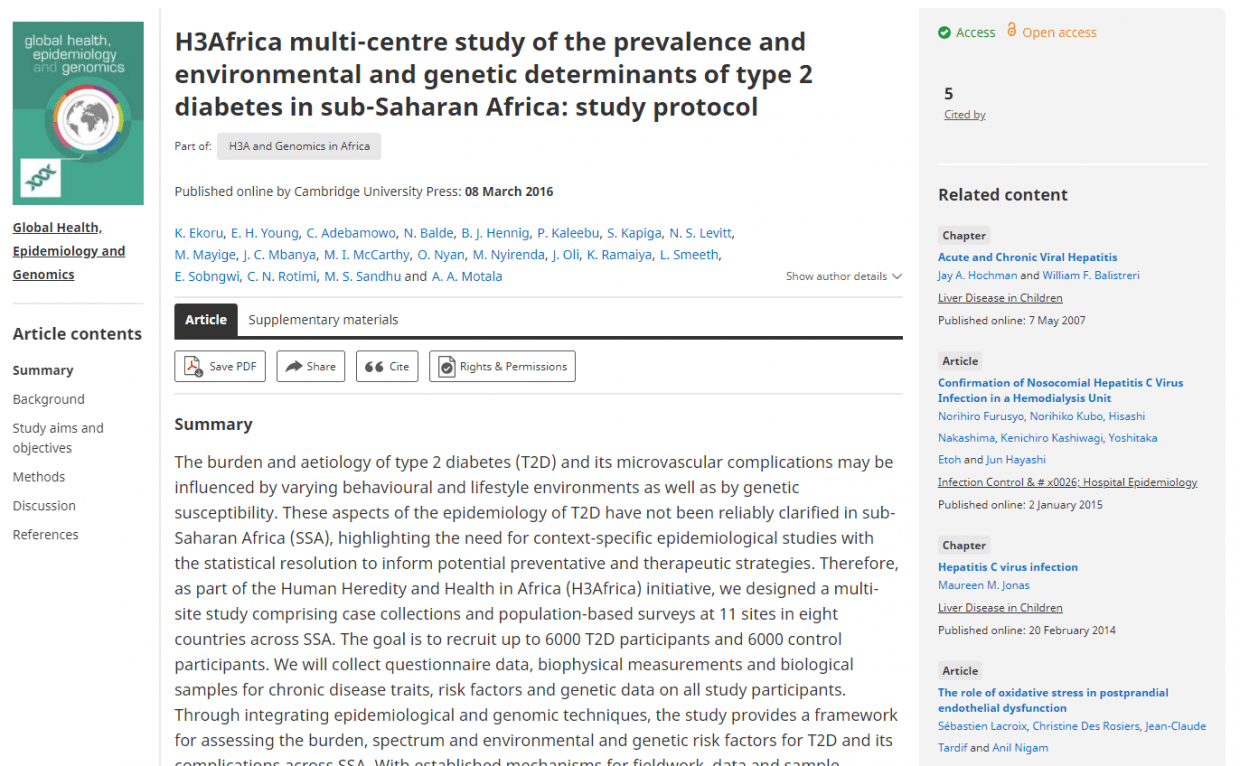New journal content page designs on Cambridge Core
Update: The new designs are now live for the nine journals listed below, plus an additional 40 journals since 16th November 2020. The designs will go live later in the month for all our other journals.
Over the past year the Cambridge Core team has been working on the evolution of the platform’s journals content landing pages. We took an agile approach, building upon previous versions, gathering user feedback through direct testing, interviews, and iteration, to ultimately deliver the design we have settled on today.
Following the research outcome, it was decided to move the HTML fulltext content to the abstract landing pages, in order to:
- Improve the online reading experience for all users
- Increase the usage of our content
- Enhance the capabilities of our existing full-text HTML offering
- Increase the user’s understanding of their content access level
Information published in the HTML format is easier to find and use. From a reader’s perspective it means one less click to access the content they are interested in and easier navigation on the website. Text and images also fit the browser better on all devices (laptops, tablets, and phones). With the new design, users can also immediately see the article content, how many people cited the work and still download the article as a PDF.
In the image below, you can see how the users see abstracts at the moment. They need to click ‘View HTML’ to access and read the article content in HTML form, which will be recorded in usage stats as an HTML fulltext view.

Going forward, the HTML content will be moved onto the abstract landing page. This means that the usage event of the HTML content will be immediately recorded when a user hits the abstract landing page (provided they have access). This will change the way Cambridge University Press tracks usage and put it in-line with other publishers that use the HTML content on the abstract landing page. You can see the new design in the image below. Readers will still be able to access the PDF fulltext article via the PDF link, if the journal provides content in PDF form.

The new article page redesign will initially be implemented to the following 8 journals in early November – the final date is to be confirmed:
- Behavioural Public Policy
- Global Constitutionalism
- Health Economics, Policy and Law
- International Theory
- Japanese Journal of Political Science
- British Journal of Political Science
- Journal of Public Policy
- Journal of Plasma Physics
- Wearable Technologies
The new page design will be delivered to our remaining journals content a few weeks later. We will confirm this date once the new designs have been implemented to the above 9 journals.
The approach taken to developing and deploying this update also ensures that Cambridge Core’s journal pages remain compliant with standards such as WCAG 2.0 for accessibility and COUNTER 5 for usage data that we’ve already been audited against.
Userfeedback remains important to us and, as we have done throughout the delivery of this project, we want to give users an opportunity to feedback on our new article page design before we do a full roll out to all of our academic journals. This way we can hear what even more of our readers think of the new content page and make this a truly user centric page. Please email us at corefeedback@cambridge.org to share your thoughts.






